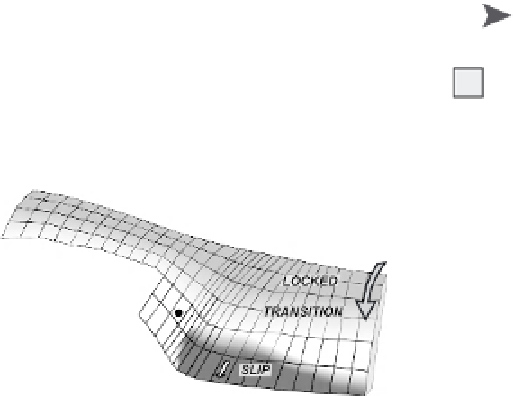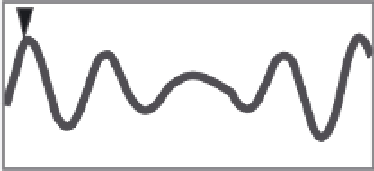Geology Reference
In-Depth Information
Box 5.1
Episodic slow earthquakes.
One of the most striking recent seismological
discoveries has been recognition of episodic
events of relatively rapid slip along faults.
Although hints of such phenomena had been
recognized earlier, it was the advent of arrays
of continuous GPS stations that revealed
indisputable evidence for repeated episodes
of rapid slip. One of the earliest studies took
place in the Cascadia subduction zone in
Washington and British Columbia (Dragert
et al
., 2001). Here, although the GPS record
from a single station may show a steady,
long-term slip rate, this long-term trend is
periodically punctuated by brief intervals
25
slow slip events
Subduction
Cross Section
15
Daily
GPS
trench
5
Daily position
Short-term average
Long-term average
overriding plate
-5
1997
1998
1999
Year
2000
2001
B
A
Stress Anomaly: Wobble
0.3
0.2
Slow
Earthquake
Model
subduction
interface
locked
0.1
transition
0.0
C
1997
1998
1999
Year
2000
2001
D
slip
0.2
0.1
0.0
-0.1
-0.2
-0.3
Stress Anomaly: Water
E
2005
1995
2000
Year
A. GPS data recording slow slip events on the Cascadia subduction zone. B. Cross-section of a subduction zone
with locked to creeping sections. C. Model for the geometry of slow earthquakes. D. Calculated stress anomaly
in Cascadia due to Chandler wobble. E. Stress anomaly on the Cocos plate due to water loading. Modified after
Dragert
et al
. (2001), Shen
et al
. (2005), and Lowry (2006).















































































































































































































